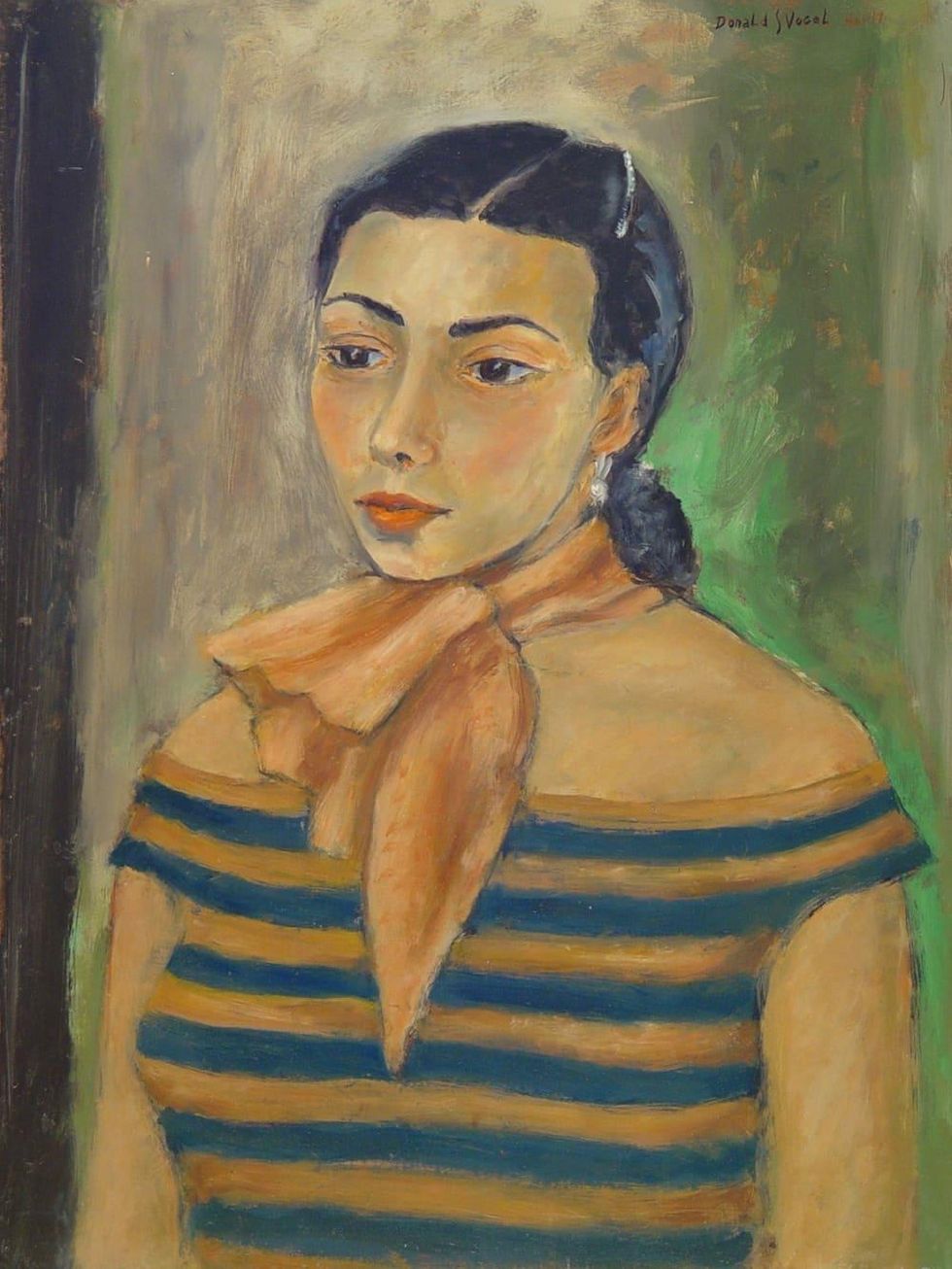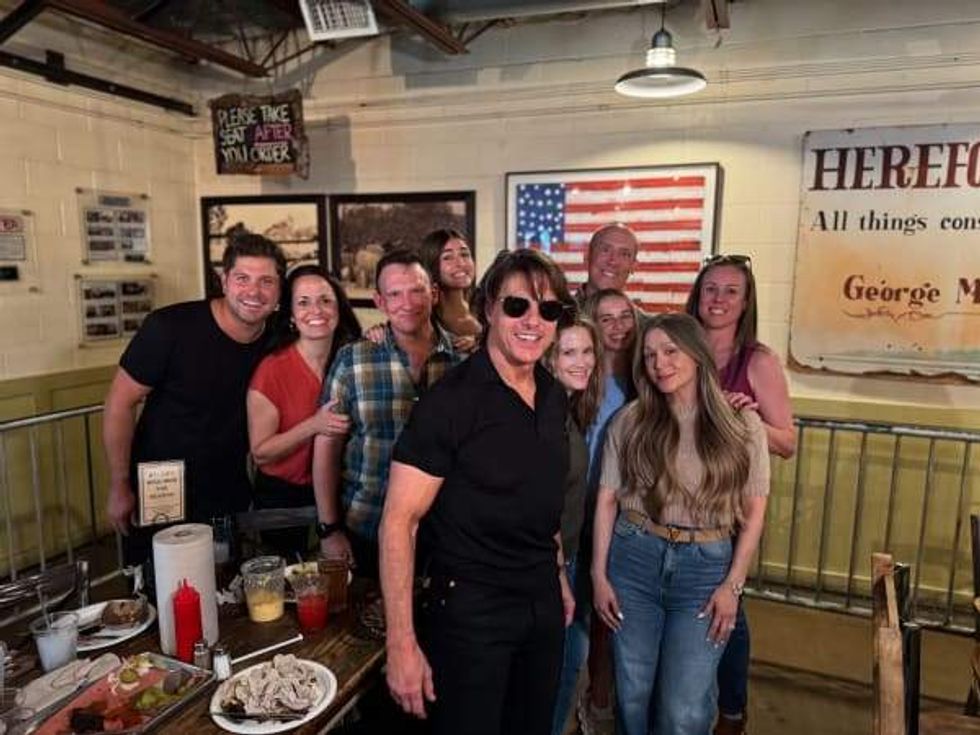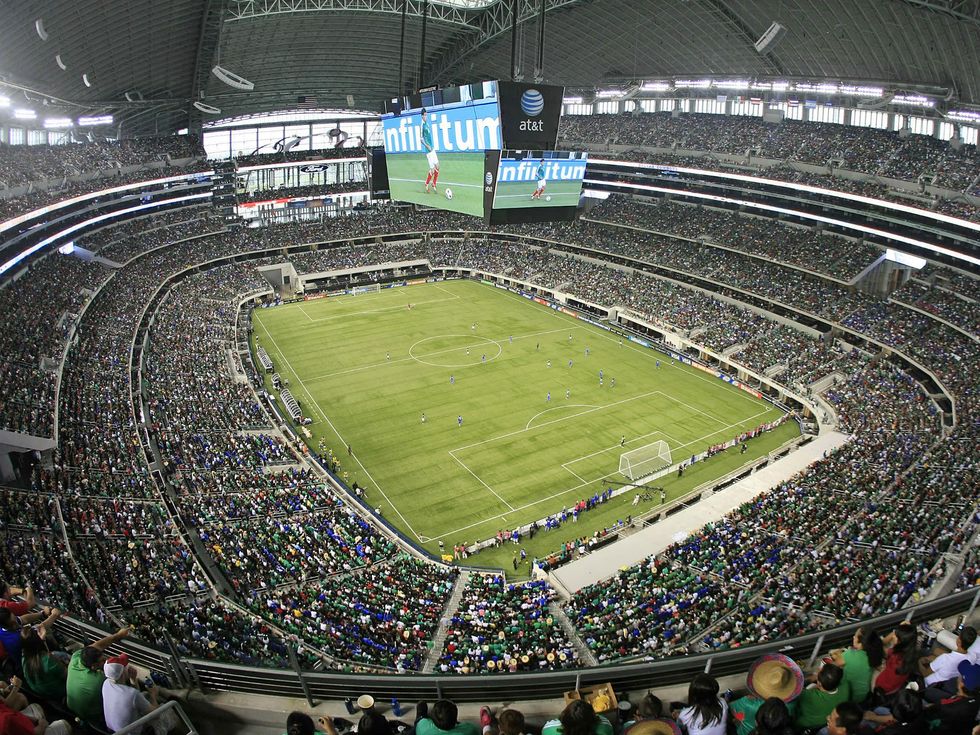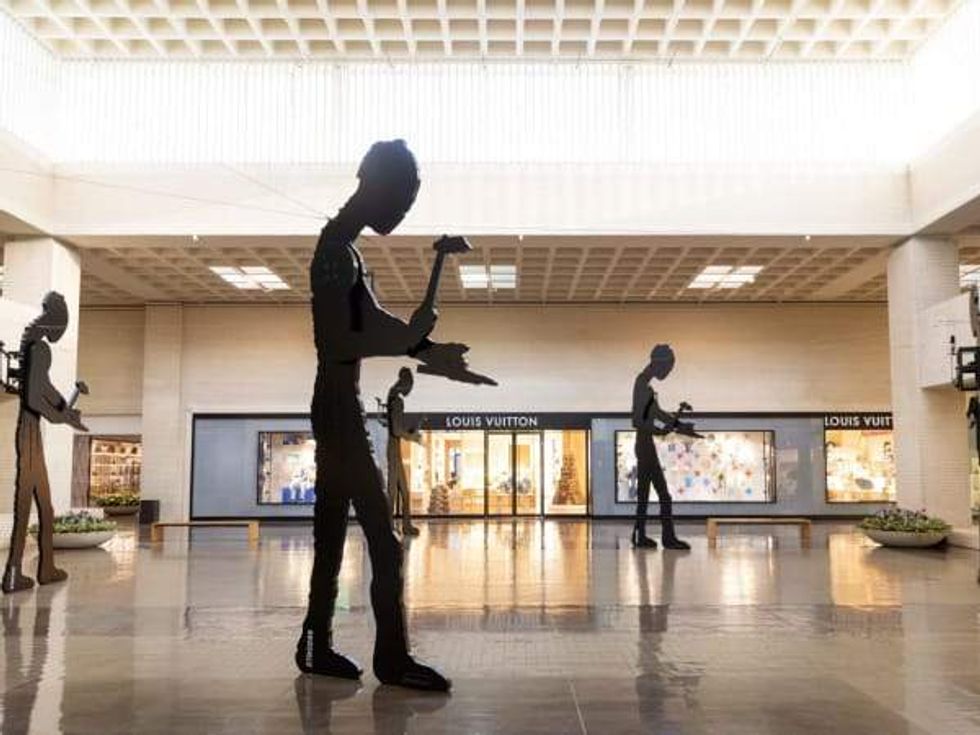Your Show of Shows
Give thanks and go see these 5 essential DFW gallery exhibits in November
This month, there’s a lot to be thankful for in the art world. At the top of the list? A retrospective of the founder of the oldest modern gallery in Dallas, fresh work discovered through Instagram, and contemporary artists creating new twists on traditional techniques. As you are planning your family activities during the long Thanksgiving holiday weekend and beyond, gather your clan and go check these out.
“New Pop,” various artists, at Fort Works Art
Exhibition dates: Through December 30
Closing reception: December 20, 7-9 pm
If there’s one advantage that technology has brought to the art world, it's the instant recognition of talent outside of the traditional gallery system. A new crop of millennial artists curated by the “multimodal creative platform” The Tax Collection has arrived at Fort Works Art to showcase pop-influenced photographs, digital works, painting, and neon.
Fort Works co-owner Lauren Childs met the Collection at Miami’s Scope Art Fair last year, and the idea of outsourcing a show through the gallery-share Condo model led to “New Pop’s” fresh collective.
A “politically incorrect” print of Queen Elizabeth chomping on a McDonald’s burger by Syrian artist Saint Hoax, Santlov’s Japanese-influenced image of Batman and Superman surfing, and Sara Zaher’s neon, pill-popping mouth all poke fun at the obsessions of modern life in the pop tradition.
Along with Chloe Bennett’s twisted images, Felipe Posada’s surreal collage, Tony Futura’s amusing digital works, and Andre Veloux’s saucy Lego creations, each piece in “New Pop” is notable for its influence in the world of social media. All of the artists were sourced from Instagram, making their impact stretch much further than the limits of the gallery walls.
“Donald S. Vogel (1917-2004), A Celebration,” at Valley House Gallery and Sculpture Center
Exhibition dates: Through December 2
At the other end of the spectrum from “New Pop” are the moody, color-splashed canvases of Valley House founder Donald S. Vogel. Included in the collections of the Art Institute of Chicago, the Dallas Museum of Art, and the Philadelphia Museum of Art (among others), Vogel is perhaps most famous in Dallas as his role as the godfather of local modern art. Founded in 1954, his North Dallas gallery Valley House is indisputably the city’s oldest and most beloved space, having brought the works of Cezanne, Henry Moore, and Auguste Renoir to town.
As a painter, Vogel’s works were characterized by his love of color and fascination with the changing qualities of light. Spanning from the 1940s to the 1990s, “A Celebration” honors what would have been Vogel’s 100th birthday. According to the gallery’s co-owner Cheryl Vogel, the show is a “sentimental journey” through the artist’s oeuvre.
“During his student years at the Art Institute of Chicago, the Impressionist and Nabi paintings lifted him out of his meager circumstances, and he devoted himself to portraying beauty as he felt it from then on,” she says. “These are the years that he led a double life as director of Valley House Gallery, where his home and studio still stand in the midst of our sculpture gardens. Although his subjects are invented, elements of our gardens and the way he lived fill his paintings with the pleasure he sought in life."
“Pegasus Armor,” Joshua Goode at Ro2 Art
Exhibition dates: Through December 2
It’s rare for local sculptor Joshua Goode to show his conceptual pieces in his hometown. On the heels of his well-received New York show at Ivy Brown gallery earlier this year, Goode brings his fascination with personal mythology and ancient artifacts to Ro2 Art. Inspired by the Arms and Armor room at the Metropolitan Museum of Art (a space he says looks “like it was painted by Caravaggio”), he has created a full set of armor that references both his childhood and classical antiquities.
Given the mythological backstory of being discovered by in 1994 northwest of Fort Worth by a group of teenagers, his supposed “15,000- to 17,000-year-old artifacts” may resemble medieval relics, but in reality they are crafted from some of Goode’s most beloved totems, including casts of Matchbox trucks and laminated baseball cards.
“I’m trying to find a way to make things that were special to me in childhood important to everybody,” says the artist, who has formerly created faux “tombs” he excavated on site at the McKinney Avenue Contemporary. “Everything about my work has meaning — there’s something very specific in all of it.”
Although the work is meant to be theatrical in both concept and execution, Goode has learned not to pin it down to any given period or era, as sometimes viewers may take his historical homages a bit too literally.
“I guess it would be Medieval, but the last time I gave fake dates, too many people started believing it,” he says. “I don’t want to trick people; I want them to look at it with a cocked eye and question what’s happening.”
“A Present Abstract,” various artists, at Cydonia Gallery
Opening reception: November 18, 6-8 pm
Exhibition dates: November 18-December 16
How do you solve a problem like abstraction? Once a methodology that blew apart the world of figurative formalism, the work of modern abstract painters can often be perceived as “decorator art,” chosen less for the critical motive behind the painting than for how it matches the couch.
With “A Present Abstraction,” Cydonia Gallery guest curator Alex Bowron has breathed new life into a tricky genre by exploring the work of artists that employ abstraction as a tool, embracing its legacy as they play with representation conceptually.
All based in Toronto, the seven artists in “A Present Abstract” address a wider scope in practice, one that Bowron was surprised and inspired to discover in a of studio visits.
“I wasn’t planning on doing a show about abstraction,” she explains. “It wasn't like I had an idea and was looking for work to fit it. I saw these themes come out of the studios. None of the artists in the show are working primarily in abstraction — they have a wide practice that culminates in work that has a different aesthetic value.”
In each work’s title is a clue to its deeper meaning. Jade Rude’s seemingly minimal sculptures reference geometric shapes that reoccur in Albrecht Dürer’s representational paintings, and Jim Verburg’s Rothko-influenced canvases are, in reality, layers of starched cotton placed together in a way that reflects light and shadow.
Says Bowron, “If you take the time to ask and look or read to find out what’s going on, there’s a huge trajectory of the process behind it that is super interesting. The reward involved in spending time with a work is what makes it gratifying.”
“Doubling the Cube,” Rachel Hellman, at Galleri Urbane
Opening reception: November 18, 6:30-8:30 pm
Exhibition dates: November 18-December 30
Blurring the line between painting and sculpture is the specialty of Rachel Hellman. Candy-striped and decidedly cool, her pieces of origami-influenced painted poplar wood and geometric compositions on paper at Galleri Urbane provide a geometric puzzle to solve as they engage the eye with a vivid spectrum of color.
“I kind of think of them as parallel bodies of work,” says the artist of her mix of mediums, which may seem to be complementary at first glance. “I never really make a work on paper from a sculpture or vice versa, but I think there’s a conversation between the two. Sometimes the color that happens in the two-dimensional pieces comes into the sculptural ones, but it’s more about investigating ideas through a different channel.”
Most known for her work as a painter, Hellman was rolling scrolls on the floor when she came up with the idea of taking angles into a third dimension. The through-line through all of her work is the way the vivid hues grab you and don’t let go.
“My work can be formal and cool, and really aggressive and playful,” she says. “(The colors) change the feel of the work and the mood of the piece.”






 Guy Fieri and Oren Salomon Courtesy photo
Guy Fieri and Oren Salomon Courtesy photo  Tom Cruise in Dallas Tribal Cafe
Tom Cruise in Dallas Tribal Cafe  The 2026 FIFA World Cup will be played at AT&T Stadium in Arlington and other venues in the U.S., Mexico, and Canada. Photo courtesy of CONCACAF
The 2026 FIFA World Cup will be played at AT&T Stadium in Arlington and other venues in the U.S., Mexico, and Canada. Photo courtesy of CONCACAF  Hammering Men, 1982 NorthPark Center
Hammering Men, 1982 NorthPark Center